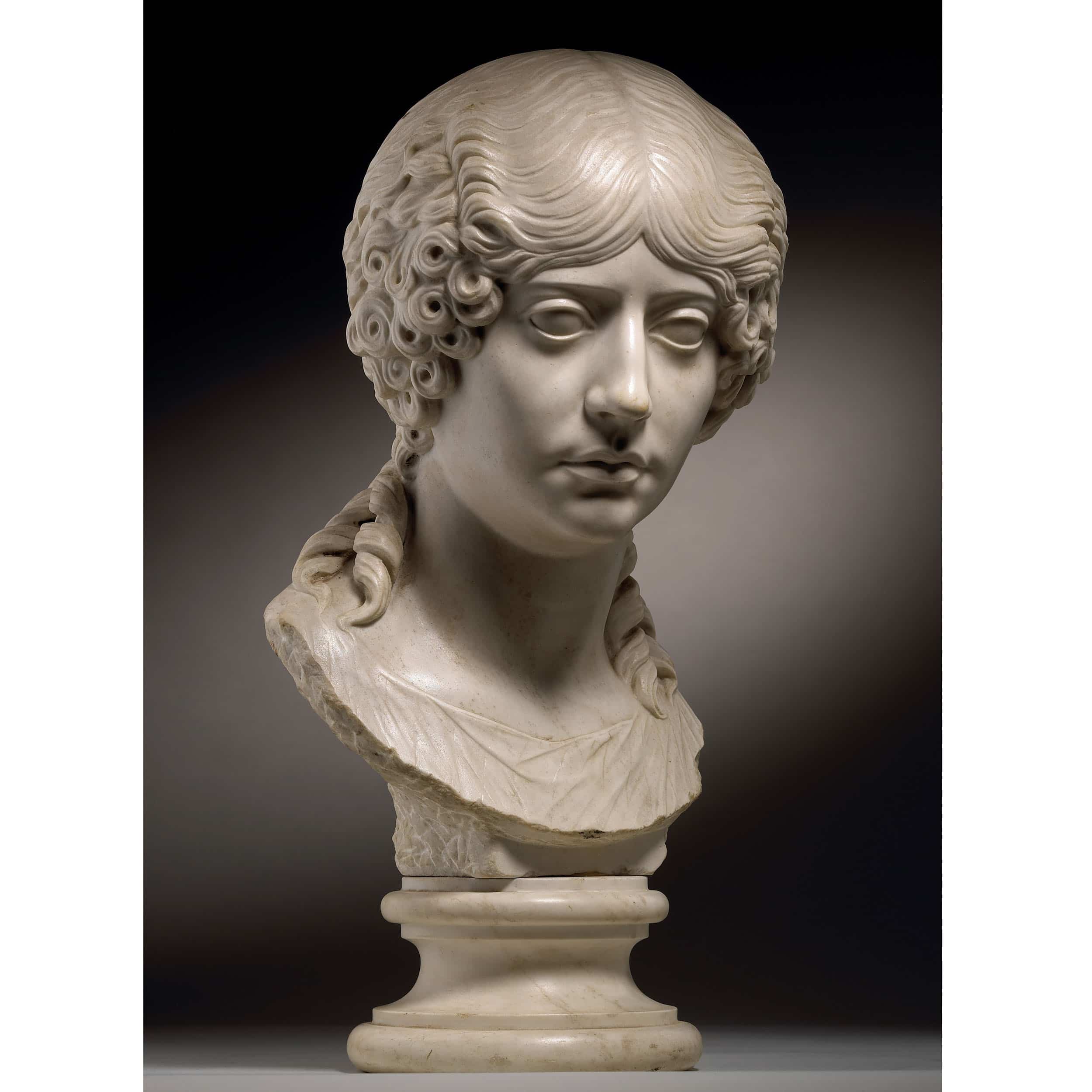ITALIE, XIXe siècle
Marbre
Hauteur : 46 cm
Ce portrait s’inspire directement d’un modèle romain (fig.1) découvert
en 1880 et conservé au Museo Nazionale Romano à Rome et
attribué à Minatia Polla.
La jeune femme présente des traits raffinés dignes de la noblesse
féminine romaine - le visage a un oval arrondi, les yeux sont grands
et ourlés, le nez long et la bouche bien dessinée est semi-ouverte.
Le front bas est surmonté d’une coiffure sophistiquée - séparées
par une raie médiane, les longues mèches souples se terminent en
boucles et quelques-unes tombent délicatement sur ces épaules.
Elle porte une robe au plissé très subtil et à l’encolure ronde.
Si l’on compare notre portrait avec l’original romain de Minatia Polla,
on constate qu’il s’agit trait pour trait d’une copie néoclassique du portrait de la jeune romaine. Seul élément novateur, l’embonpoint sous
le menton plus présent sur notre portrait que sur le modèle antique.
Dès le XVIIIe et durant toute l’ère néoclassique, les grandes découvertes archéologiques suscitent un tel intérêt et engouement (cf.
Winckelmann) que les sculpteurs contemporains se confrontent aux
productions antiques afin de révéler leur talent. Le portrait présenté
ici, compte tenu de la finesse des traits et de la qualité générale de la
sculpture, est sans équivoque l’œuvre d’un grand sculpteur.
Bibliographie
Bianca Maria Felleti, Museo Nazionale Romano, I. Ritratti, n°107, 1953
ITALY, 19TH century
PORTRAIT OF A ROMAN NOBLEWOMAN
Marble
H. 46 cm
This portrait is directly inspired from a roman model (fig. 1) discovered
in 1880 and kept at the Museo Nazionale Romano in Rome
and attributed to Minatia Polla.
The young woman presents refined features worthy of the roman
feminine nobility - the face has a rounded oval, the eyes are large and
hemmed, the nose long, and the well-defined mouth is half-open.
The low forehead is topped with a sophisticated hairstyle - separated
by a middle parting, the long, soft locks end in curls, and a
few fall delicately over those shoulders.
She wears a dress with very subtle pleats and a round neckline.
If we compare our portrait with the Roman original by Minatia Polla,
we see that it is exactly a neoclassical copy of the portrait of the
young Roman. The only innovative element is the overweight under
the chin, more present on our portrait than on the antique model.
From the 18th century and throughout the neoclassical era, the great
archaeological discoveries aroused such interest and enthusiasm
(cf. Winckelmann) that contemporary sculptors were confronted
with ancient productions in order to reveal their talent. The portrait
presented here, given the delicacy of the features and the general
quality of the sculpture, is unequivocally the work of a great sculptor.
Description complète







